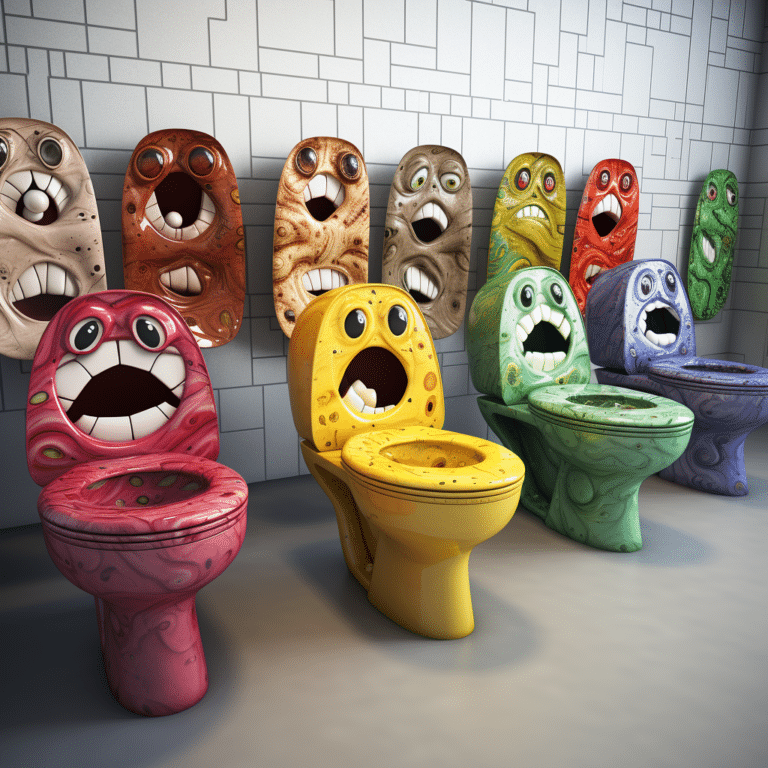Navigating Postpartum: Changes, Challenges and Self-Care
Postpartum changes and self-care After childbirth, a woman’s body and life undergo many changes. It’s a transformative experience. Comprehending what happens can enable new mamas to face this transition with courage and preparation.
In the first few weeks postpartum, the uterus returns to its pre-pregnancy size. This process is called involution, and can result in faint cramping and bleeding, known as lochia. During this period, it’s vital to rest and avoid strenuous activities for the body to recuperate.
Breastfeeding is another essential aspect. It not only nourishes the baby, but also encourages the uterus to shrink back to its normal size. In addition, oxytocin released during breastfeeding promotes bonding between mother and child, and decreases the risk of postpartum hemorrhage.
Sleep deprivation is typical in early motherhood. To stay healthy, it’s essential to get sufficient rest and sleep. Asking for help from family and friends or hiring a postpartum doula can be beneficial.
Mental health is equally important. Postpartum depression affects 15% of women, and seeking professional help if experiencing symptoms like prolonged sadness, irritability, or loss of interest in activities is crucial.
Setting up a routine to accommodate both the baby’s needs and personal self-care is helpful. Engaging in gentle exercises like walking or pelvic floor exercises can help with Postpartum changes and self-care muscle recovery and energy.

Physical Changes After Childbirth
After giving birth, women experience a range of physical changes. These changes include alterations in hormone levels, such as a decrease in estrogen and progesterone. Additionally, the uterus shrinks back to its pre-pregnancy size, and the abdominal muscles begin to regain their tone. Other changes include breast engorgement, vaginal soreness, and postpartum bleeding. It is important for women to keep in mind that these physical changes vary from person to person and may take time to fully recover. It is crucial to take care of oneself, rest, and seek medical advice if needed, in order to ensure a healthy and comfortable postpartum experience.
Say goodbye to your raging pregnancy hormones, and hello to a whole new level of emotional rollercoaster, where even the simplest things can make you laugh, cry, and question your sanity all at once.
Hormonal Changes
A woman’s body undergoes big changes during pregnancy and childbirth. Hormonal fluxes play a vital part in getting ready for the baby’s arrival and supporting its growth. Let’s explore the world of hormonal changes post-childbirth!
- Estrogen Levels: Estrogen levels increase during pregnancy, then go down drastically after childbirth. This reduction can cause symptoms like flashes of heat, mood shifts, and dryness in the vagina.
- Progesterone Levels: Similar to estrogen, progesterone levels also decline after childbirth. It keeps the uterine lining healthy during pregnancy. Lower progesterone can lead to mood changes and postpartum depression.
- Prolactin Levels: Prolactin is the hormone that helps breastfeeding moms produce milk. It supports milk supply and promotes bonding between mother and baby.
- Oxytocin Release: Oxytocin is essential during labor and breastfeeding. It starts contractions and triggers the milk letdown reflex. It also helps with maternal-infant bonding and love.
- Cortisol Levels: The stress hormone cortisol rises during labor, then falls after childbirth. But postpartum stressors can still affect cortisol levels, impacting a woman’s mood and health.
These hormonal changes help women handle the postpartum period and adjust to their roles as caregivers. Knowing these fluctuations can help women take proactive steps for their physical and emotional wellbeing.
An interesting detail is that some women may experience an imbalance in thyroid hormones after childbirth. Postpartum thyroiditis, with mild to severe thyroid dysfunction, can happen within the first year after delivery. Symptoms like fatigue, weight changes, and mood swings may appear.
Pro Tip: Talking openly to healthcare providers about postpartum changes is key. It helps with timely interventions and support for new moms. Seeking help is a sign of strength and sets the foundation for a healthy motherhood journey.
Postpartum Bleeding
Postpartum bleeding is an expected part of childbirth. It’s the vaginal blood and tissue that comes out as your body heals itself. Here are six points to understand:
- 1. It usually lasts 4 – 6 weeks, and gradually lessens.
- 2. It’s called lochia, which is made up of blood, tissue, and mucus.
- 3. At first, it’s bright red. Later it’s pink or brown.
- 4. Heavy bleeding, needing a pad every hour, needs medical help.
- 5. Any smell or fever mean an infection, so get help.
- 6. It should become light spotting after a few weeks.
It varies from woman to woman. Secondary postpartum hemorrhage is unusual but can happen – heavy bleeding several weeks later. It might be from a piece of the placenta left behind, or an infection. It needs immediate help.
Sarah, a first-time mum, had postpartum bleeding for too long. Her doctor found some placenta still there and she had a minor procedure. This shows how important it is to ask for medical advice if postpartum bleeding is different.
Postpartum is unique for everyone. Read up and if there’s any worry, speak to your doctor about postpartum bleeding.
Breast Changes
Giving birth brings significant changes to a woman’s breasts. This is caused by the hormonal shifts during pregnancy and breastfeeding. Understanding these changes can be helpful. Here are 6 points:
- Size & Shape: Breasts may grow bigger in preparation for milk production during pregnancy. After birth, they tend to shrink, but the shape might stay different.
- Engorgement: In the early days of breastfeeding, the breasts swell with milk. This is normal as the body adjusts.
- Tenderness & Sensitivity: Many women experience increased sensitivity and tenderness in their breasts after birth. This is caused by hormonal fluctuations & increased blood flow.
- Stretch Marks: Breasts can develop stretch marks during pregnancy due to rapid growth. These marks might not go away completely.
- Nipple Changes: The nipples may become bigger or darker in color during pregnancy. Post childbirth, they may also become more sensitive due to extra nerve endings.
- Milk Production: Breastfeeding stimulates milk production, which is regulated by hormones. Initially, most moms produce colostrum, a thick yellowish fluid providing essential nutrients for newborns, before transitioning to mature milk.
Each woman’s experience of breast changes after childbirth is unique. To manage them well, here are a few tips:
- Wear the right bra: Buy bras designed specifically for breastfeeding moms. They provide support & alleviate discomfort.
- Use Cold Compresses: If engorged or sore, cold compresses can reduce swelling & ease pain.
- Take Warm Showers & Massage: Warm showers or gentle massages can help with milk flow & clogged ducts.
- Maintain Hygiene: Keeping the breasts clean & dry prevents infections, especially for breastfeeding moms.
- Seek Professional Help: Consult a lactation consultant or healthcare provider for guidance & support if you have any breast-related concerns.
By following these steps, you can manage the physical changes in your breasts post childbirth confidently & comfortably.
Emotional Changes After Childbirth
The postpartum period brings about a range of emotional changes due to the hormonal shifts in a woman’s body. These changes, often referred to as the ‘Postpartum Emotional Rollercoaster’, can include feelings of joy, sadness, anxiety, and irritability. It is normal for new mothers to experience a mix of emotions as they navigate the challenges of caring for a newborn while adjusting to changes in their own life. These emotional changes are a natural part of the postpartum experience and will gradually stabilize over time.
During this period, new mothers may also experience a condition called the ‘baby blues’. This is characterized by mood swings, weepiness, and feelings of overwhelm. The baby blues typically occur within the first week after childbirth and can last for a few days to a couple of weeks. It is important for mothers to seek support and understanding during this time, as it can greatly help in alleviating the emotional turmoil.
Experience postpartum depression
In addition to the baby blues, some women may experience postpartum depression. This is a more severe and long-lasting form of mood disorder that requires professional intervention. Postpartum depression can affect a mother’s ability to care for herself and her baby. It is crucial for women experiencing persistent feelings of sadness, hopelessness, and fatigue to seek medical help as soon as possible.
It is important to remember that every woman’s postpartum experience is unique, and the emotional changes may vary. Some may find themselves adapting well to the new role of motherhood, while others may struggle more. It is crucial for new mothers to prioritize self-care, seek support from loved ones, and not hesitate to reach out for professional help when needed. Remember, you are not alone in this journey, and there is support available to help you navigate the emotional changes after childbirth.
Now is the time to prioritize your emotional well-being and connect with other mothers who are going through similar experiences. By seeking help and support, you can ensure a smoother transition into motherhood and create a nurturing environment for both yourself and your baby. Remember, you deserve to be happy and healthy, so don’t let the fear of missing out on this opportunity for growth and bonding hold you back. Embrace the emotional changes after childbirth and take the necessary steps towards finding balance and joy in your new role as a mother.
After childbirth, be prepared for a rollercoaster of emotions, sleep deprivation, and an overwhelming desire to soak in a bathtub filled with wine.
Baby Blues
The ‘Baby Blues’ is a common emotional rollercoaster for new mums post-birth. It includes sudden mood swings, anxiety, sadness or irritability. This is a natural reaction to the hormonal changes happening in a woman’s body. Here are some of the signs:
- 1. Overwhelming emotions.
- 2. Uncontrollable tearfulness.
- 3. Exhaustion.
- 4. Easily irritated.
- 5. Anxiety about caring for baby.
- 6. Drastic highs and lows.
This generally passes within two weeks. It’s important not to confuse it with postpartum depression. To cope, new mums should:
- Connect with others to talk about feelings.
- Rest when possible.
- Accept help with tasks.
- Do self-care activities.
- Seek professional help if needed.
Prioritize self-care and reach out for support. This will help with the joys and challenges of motherhood.
Postpartum Depression
Hormonal shifts during pregnancy and childbirth can cause postpartum depression. This is due to the chemical imbalances in the brain that emerge. Plus, the physical demands of caring for a newborn and lack of sleep make it worse.
It’s distinct from the “baby blues,” which usually go away in a few weeks. But postpartum depression requires treatment.
If you or someone you know may have it, get help from healthcare pros. They provide guidance and resources to manage symptoms and boost well-being.
Pro Tip: Seeking help is strong, not weak. Don’t be ashamed to get assistance at this difficult time.
Recovery and Self-Care
Recovering and taking care of oneself after childbirth is crucial. Here are three important points to consider:
- Physical recovery: Rest is paramount to heal the body after labor. This includes managing postpartum pain, taking prescribed medications, and engaging in gentle exercises as advised by healthcare professionals.
- Emotional well-being: The postpartum period can bring about a range of emotions. Seeking emotional support from loved ones, joining support groups, or consulting a therapist can help manage any feelings of anxiety or depression.
- Self-care practices: Prioritizing self-care is essential during this time. Eating nutritious meals, staying hydrated, and getting adequate sleep are key components of postpartum self-care.
Additionally, it’s important to note that each individual may have unique experiences and challenges during their postpartum recovery journey.
Let me share a true story from a new mother’s perspective. After giving birth, Sarah found herself overwhelmed with fatigue and struggled to manage her emotions. With the support of her partner and healthcare provider, she implemented a self-care routine that included short breaks, relaxation techniques, and seeking professional help. Gradually, Sarah’s physical and emotional well-being improved, and she was able to fully embrace the joy of motherhood.
After childbirth, getting a good night’s sleep is like finding a unicorn – you’ve heard it exists, but it feels mythical and unattainable.
Rest and Sleep
Rest and sleep are essential for managing stress. When we get enough rest, our minds are clearer and can better handle daily Postpartum changes and self-care challenges. But if we don’t get enough sleep, it can lead to weakened immunity, decreased cognitive function, and increased irritability.
To improve the quality of our rest, we must establish healthy sleeping habits. A relaxing bedtime routine can be helpful, like reading a book or listening to calming music. Also, avoid any stimulating activities before bed.
Also, try to maintain a consistent sleep schedule, going to bed and waking up at the same time each day. This will help regulate our internal clock and promote better sleep quality.
Creating a comfortable sleeping environment is also important. Investing in supportive mattresses and pillows, and making sure our bedroom is quiet, dark, and at a comfortable temperature can help us sleep better.
My friend recently realized how important rest is after suffering from burnout due to lack of sleep. He started prioritizing his rest by creating a consistent bedtime routine and an ideal sleeping environment. The change was amazing – he felt more alert during the Postpartum changes and self-care day and noticed improvements in his mood and overall wellbeing.
We must remember to make sleep a priority – it contributes to our physical and mental health, and helps us achieve a better balance between work and leisure.
Proper Nutrition
Nutrition is vital for a healthy lifestyle. Consume a balanced diet with all the necessary vitamins, minerals, and nutrients. Here are some tips to get you started:
- Include lean meats, poultry, fish, eggs, and dairy for protein.
- Eat a selection of fruits and vegetables for antioxidants, vitamins, and minerals.
- Choose whole grains such as brown rice, quinoa, and whole wheat bread over refined carbs.
- Include healthy fats like avocados, nuts, seeds, and olive oil in moderation.
- Drink plenty of water to help digestion and regulate body temperature.
- Moderation is key. Control portions to maintain a healthy weight.
Mindful eating and tuning into your body’s hunger cues can also promote better nutrition. Lastly, seek advice from medical professionals to create a personalized plan.
Exercise and Physical Activity
Sarah had a sedentary lifestyle until she was 40. She felt tired often and kept gaining weight. So, she changed her habits. She took brisk walks during lunch and went to yoga classes twice a week.
The result?
In a few weeks, Sarah had more energy, felt better and started to lose weight. She was so motivated that she kept exercising with more intensity.
Physical activity has many benefits. Strengthens muscles and increases endurance. It releases endorphins, which helps reduce stress and improves mood. Helps manage weight by burning calories and building lean muscle mass. It’s also improves cardiovascular health, reducing the risk of heart disease. Plus, can help prevent chronic diseases like diabetes, certain types of cancer, and obesity. Finally helps maintain cognitive function and memory retention.
Bonding with the Baby
Your newborn Bonding with is a crucial aspect of postpartum life, establishing a deep connection between parent and child. This emotional attachment plays a fundamental role in the development of the baby’s social, emotional, and cognitive skills.
This emotional attachment plays a fundamental role
- Building Trust: Spending quality time with your baby, engaging in eye contact, gentle touch, and responsive caregiving fosters trust. This trust lays the foundation for a secure attachment, which positively impacts the baby’s sense of safety and self-esteem.
- Physical Presence: Being physically present for your baby, especially during feeding, bathing, and comforting moments, promotes bonding. This proximity allows the baby to feel secure, loved, and nurtured, facilitating emotional connection and attachment.
- Communication and Interaction: Bonding is strengthened through verbal and nonverbal communication between parent and baby. Talking, singing, and cooing to your child help develop language skills. Additionally, engaging in activities, such as playing, reading, and baby massages, encourages interaction and stimulates the baby’s sensory and cognitive development.
Each bonding experience is unique
It is important to remember that and it may take time for the relationship to develop. So, be patient and allow yourself to connect with your baby in your own way, Postpartum changes and self-care fostering a strong bond that will last a lifetime.
As you embark on this incredible journey of parenthood, make the most of these precious moments of bonding with your baby. Cherish every smile, every cuddle, and every milestone, as they grow up so quickly. Embrace the joy, love, and sense of fulfillment that comes from nurturing and being present for your little one. Don’t let the fear of missing out on these fleeting moments drive you; instead, relish in the opportunity to create a deep and meaningful connection with your baby.
After enduring hours of labor, you finally get to experience the bliss of skin-to-skin contact…with a tiny human who thinks your nipple is a chew toy.
Skin-to-skin Contact
Skin-to-skin contact, also called kangaroo care, is a special way to hold your baby against your bare chest. This physical connection is great for both the baby and the parent!
- It helps regulate their body temperature.
- It promotes bonding through touch and closeness.
- It stimulates breastfeeding.
Plus, skin-to-skin contact can have a calming effect on both people. It gives a feeling of safety and comfort, which lowers stress levels.
Make skin-to-skin contact part of your daily routine with your baby. After birth or during quiet moments together, enjoy these special moments of closeness. These experiences are the start of a long, loving relationship.
Breastfeeding
Breast milk is a must-have for healthy growth and development in infants. It’s easy to digest, reducing digestive issues and allergies. Plus, it enhances the bond between mum and baby, and provides security and emotional connection.
It also protects against illnesses due to its antibodies and immune-boosting properties. Moreover, it adapts to fit baby’s changing needs, offering optimal nourishment at each stage.
Interestingly, breastfeeding has been around for centuries since ancient times, highlighting its critical importance in human history.
Postpartum Care Practices Around the World
Postpartum Care Practices Around the World vary widely. Here are some key points to consider:
- In many cultures, postpartum care involves the presence of a designated caregiver to ensure the mother’s physical and emotional well-being.
- Traditional Ayurvedic practices in India emphasize a 40-day rest period for the mother, with special dietary restrictions and herbal remedies.
- In China, the practice of “sitting the month” involves a period of confinement where new mothers rest, eat nourishing foods, and avoid activities like bathing.
- In some African countries, postpartum rituals include women gathering to offer support, advice, and assistance with childcare.
- In Western countries, postpartum care often involves medical check-ups, support groups, and access to lactation consultants.
- Home visits from healthcare professionals are common in many countries to ensure the mother and baby’s well-being and address any concerns or complications.
Additionally, some unique details that may vary across cultures include the specific foods and herbs used, the rituals and ceremonies performed, and the level of social support available to new mothers. It is important to remember that these practices are deeply rooted in cultural traditions and may differ significantly from one country to another.
Pro Tip: Familiarize yourself with the postpartum care practices of different cultures to provide comprehensive and culturally sensitive care to new mothers.
Can’t wait for the traditional practices after childbirth – who needs modern medicine when you can just rub cow dung on your belly?
Traditional Practices
In many cultures, traditional postpartum care practices have been passed down over generations. These practices include customs and rituals that support new mothers’ physical and emotional health. Common practices include confinement, herbal remedies, binding, warm compresses, and breastfeeding support.
Moreover, there are unique details in certain cultures. For instance, special diets focus on nourishing foods believed to boost milk production and foster healing. Massage therapies with oils or techniques help relax muscles, reduce stress, and stimulate blood flow.
As these traditional practices are very effective, healthcare providers in diverse settings may benefit from incorporating them into modern Postpartum changes and self-care care. For example, offering education on proper breastfeeding can increase success rates and minimize potential problems. Integrating aspects like warm compresses or herbal remedies can give new mothers natural pain relief without solely relying on medication.
By respecting cultural traditions around postpartum care, healthcare professionals can create inclusive environments. Select traditional practices can increase new mothers’ overall well-being and recovery, promoting a holistic approach to postpartum care.
Modern Methods
Different postpartum care methods exist around the world, based on the needs and resources of women. Let’s look at some of them closely.
Traditional medicine-based care uses natural remedies and herbal treatments to help postpartum healing. This approach relies on indigenous knowledge passed down through generations.
Hospital-based care focuses on offering medical assistance to mothers after childbirth. Skilled healthcare professionals, advanced medical technology, and specialized postpartum clinics are available.
Community-based care involves establishing a network of support in local communities. Peer support groups, community health workers, and programs to empower women are part of it.
Home-based care is about providing personalized postpartum support in one’s own home. Midwives or caregivers offer individual attention and guidance.
Pro Tip: Whatever method is chosen, self-care should be prioritized and Postpartum changes and self-care help should be sought if needed.
Seeking Support and Resources
Seeking Assistance and Available Resources
When it comes to seeking Postpartum changes and self-care changes and self-care and resources after childbirth, there are several options available to new parents. Here are six key points to consider:
- Professional Help: Reach out to healthcare providers, such as doctors and midwives, who can provide guidance and advice on various aspects of postpartum care and well-being.
- Support Groups: Joining local support groups or online communities can connect you with other parents who have similar experiences, providing an invaluable source of emotional support and understanding.
- Breastfeeding Support: Seek assistance from lactation consultants or breastfeeding counselors who can help with any challenges or concerns related to breastfeeding.
- Mental Health Resources: Don’t hesitate to seek help if you experience postpartum depression or anxiety. Mental health professionals can offer counseling, therapy, or medication options.
- Parenting Classes: Consider enrolling in classes or workshops that focus on parenting skills, infant care, and managing the transition from pregnancy to parenthood.
- Online Resources: Utilize online platforms, apps, and websites that offer information, tips, and resources on various topics related to Postpartum changes and self-care recovery, newborn care, and parental well-being.
It’s also important to note Postpartum changes and self-care that every new parent’s journey is unique, and additional resources may be required based on individual circumstances.
Pro Tip: Take advantage of local community centers and libraries that often offer free or low-cost programs and resources for new parents.
Join a postpartum support group and laugh together, because if you don’t laugh, you’ll cry…and that mascara ain’t waterproof.
Postpartum Support Groups
Postpartum Support Groups are decades-old but have grown lately. In the 1970s, pioneering orgs realized a need for special support postpartum. Countless women have gained from the compassion of these groups.
It’s a non-judgmental space where women can freely discuss their feelings and anxieties without fear of stigma. Group sessions often include educational presentations on postpartum depression, anxiety, and other mental health issues. Since peers offer support, women find comfort in knowing they’re not alone. Participants learn coping strategies and self-care techniques from experienced facilitators.
Plus, Postpartum changes and self-care offer resources like referrals to therapists and support hotlines. Online support groups have become popular too, letting women connect with others from home. Attending these groups is especially helpful for women with no strong support system or higher risk of postpartum mood disorders. They gain insights and form friendships that add to their well-being.
Professional Help
Different types of professional help are available. They include:
- Therapy – Licensed therapists offer support for mental health.
- Medical Professionals – Doctors and nurses provide medical treatments.
- Legal Services – Attorneys provide legal guidance.
- Financial Advisors – Experts in finance give advice on investments and budgeting.
- Career Coaches – They help individuals make career decisions.
Each type of professional help has its own benefits. Therapy helps with psychological issues; medical professionals treat physical issues; legal services ensure law compliance; financial advisors guide to financial stability; and career coaches help reach professional goals.
Seeking professional help can be beneficial. The National Institute of Mental Health (NIMH) found that therapy is effective in treating mental health issues.

Conclusion
Postpartum changes and self-care Childbirth marks the start of a woman’s new chapter – filled with highs and lows. Physically, healing may take time, but the emotional transformation can be immense.
As a new mom, you’ll feel a wave of emotions and responsibilities. From sleepless nights to diaper changes, it can be overwhelming. Don’t struggle alone. Reach out to your support system (partner, family, friends) for guidance and comfort.
It’s vital to look after yourself too. Nourish your body and mind by eating healthy, staying hydrated, and getting rest when possible. Self-care isn’t being selfish – it’s what you need to be the best version of yourself for your baby.
Don’t forget to accept your postpartum body. It may look different, but it’s achieved something extraordinary – bringing a new life into the world. Be kind to yourself, and take time to heal and adjust.
Make the most of every moment with your baby. Time flies, and before you know it, they’ll be crawling, walking, and going to school. Cherish every smile, giggle, and milestone – they’ll form lasting memories.
Frequently Asked Questions
1. How long does it take to recover after childbirth?
Recovery time varies for each woman. In general, it takes about six weeks for the body to heal after vaginal delivery. However, it may take longer if you had a cesarean section.
2. What are the common postpartum symptoms?
Common postpartum symptoms include vaginal bleeding, sore breasts, hormonal changes, fatigue, mood swings, and constipation. These symptoms usually subside within a few weeks.
3. How can I relieve postpartum pain?
To relieve postpartum pain, you can try taking over-the-counter pain relievers, using ice packs or warm compresses, practicing good posture, and resting as much as possible. It’s Postpartum changes and self-care important to consult your healthcare provider before taking any medication.
4. When will my menstrual cycle return after childbirth?
Menstrual cycles typically resume within 6-8 weeks after childbirth if you are not breastfeeding. However, if you are breastfeeding, it may take several months for your period to return.
5. How soon can I exercise after childbirth?
It’s important to consult your healthcare provider before starting any exercise routine. Generally, light exercise like walking can be started soon after childbirth. More intense exercise should be gradually introduced after 4-6 weeks or when your healthcare provider gives you the green light.
6. What is postpartum depression and how is it treated?
Postpartum changes and self-care depression is a serious condition characterized by prolonged feelings of sadness, anxiety, and exhaustion after childbirth. It is important to seek help from a healthcare provider if you experience symptoms. Treatment commonly involves talk therapy, support groups, and in some cases, medication.






